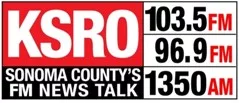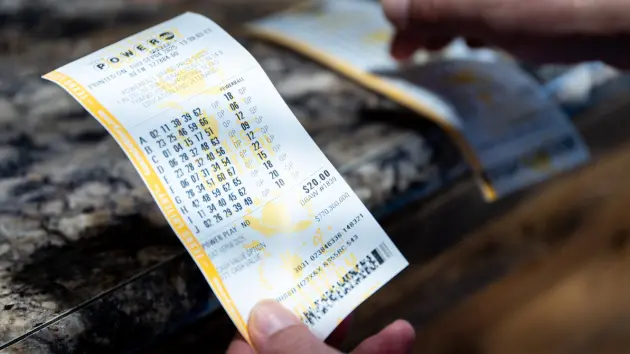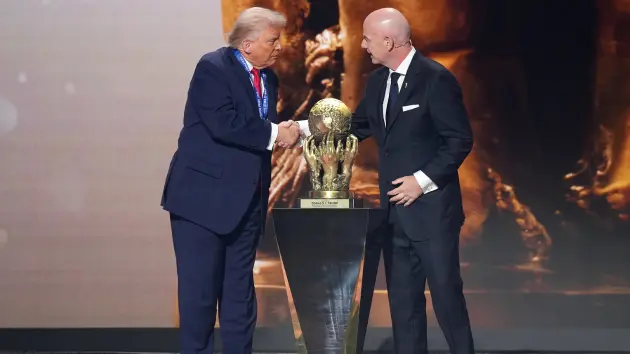
Marketing wine to younger consumers requires understanding what their parents enjoy and offering the opposites of those vintages, while ensuring products remain high quality and providing a bit of wine education. Ideas with a track record of success include sharing an array of wines at lower price points, integrating wines with music and social events, and pairing wines with dishes that include sustainably sourced, local ingredients. All the changes can be accomplished in a relaxed atmosphere that invites exploration.
Teron Stevenson, owner of Offhand Wine Bar in Santa Monica, says it helps to focus on natural wine.
“This is one of the few segments of the wine industry that’s growing. Natural wines tend to have distinct tastes because they’re unfiltered. Many have unique label art and unusual color profiles. They’re a big part of the reason young people come to my business,” said Stevenson.
In 2024, the global market for natural wine hit $15.8 billion . That number is projected to reach $37.6 billion by 2033, according to data from Growth Market Reports, the research and business consulting arm of DataIntelo Consulting Pvt. Ltd., a Canadian consulting firm. The report adds younger consumers are interested in natural wine because producers showcase their products as health-conscious and minimally processed.
“Overall, younger consumers are looking for a sense of authenticity coupled with possibilities to be curious. It’s intimidating to be introduced to wine with an $80 bottle of Napa cabernet sauvignon,” says Jessica Ryan Bell, founder and owner of Fat Cat San Francisco.
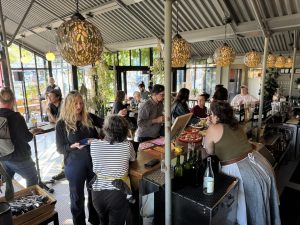
Bell’s business is a wine club oriented toward millennials and members of Gen Z. Bell is also the former wine buyer for Cheese Plus, a specialty food store in San Francisco. Bell recalled one of her first tasting experiences as a young adult in Virginia. The tasting fee was $15. She and friends tasted a variety of wines seated outside on a lawn.
“Compare that with some of the tasting experiences I’ve had in Napa. Many tasting rooms were austere and fancy. I couldn’t get another glass to taste. All the bottles were $70. I felt like I couldn’t even ask any questions,” says Bell.
Bell has found that wine popups—which offer free tastings at art galleries, movie nights, stores with items in demand and drag bingo games—have drawn crowds and donations.
“I’m seeing people want to join my wine club because of this multi-pronged approach. It helps to get a boost from local media, like articles in neighborhood newspapers and social media, such as posts on Instagram,” says Bell.
From Highway 29 to Levi’s Plaza
Outside the North Bay, wine country is not merely a few steps away. This means younger consumers typically purchase wine in two types of venues: bars/restaurants or retail stores. The two classes of establishments require different approaches.
“In restaurants, guests already plan on spending a lot of money. But steep alcohol markups, especially on wine bottles, can still feel like a hurdle,” said Kaylee Daly, lead sommelier for Decant Napa Bottle Shop & Bar in Napa. “This creates challenges for bottle sales, particularly when wine is competing with single-serving cocktails that are beautifully made and presented, and can feel more approachable to some guests,”
Restaurants that want to sell wine to younger consumers should offer a variety of styles at accessible price points.
On the retail side, younger consumers are often drawn to wines that feel approachable and low-pressure. They look for fun, design-forward labels and easy-open closures like screw caps.
“We’re seeing sales for crisp, easy, lean light whites and chillable reds. They’re easier to pair. They also tend to cost less,” says Daly.
One trend noticed by local establishments is that fewer people in Napa’s wine industry are drinking Napa wines.
“This year, Napa winemakers and industry folks drank French wines all summer. Sometimes they enjoyed Italian wines and wines from Sonoma County too,” says Daly.
She says the issue relates to “getting away from what’s right in front of your face” every day and saving Napa wines for special occasions.
“That’s something we see across the board for non-industry folks too. Napa wines are viewed as an investment, something special. That can be good, but it can also discourage having a Napa wine every day,” says Daly.
Farther south in San Francisco, about a two-minute walk from Levi’s Plaza, SF Wine Center is seeing regular crowds of millennials and members of Gen Z come to purchase wine, taste wine at its Indie Wine & Beer Bar, and store wine in its climate-controlled lockers.
“We offer over 75 wines by the glass, half-glass or third-of-a-glass flights with the option for guests to design their own tastings by country or variety of wine they’d like to explore. We understand that there can be a little price sensitivity for some members of Gen Z exploring wine. So we don’t mark up our wine list like a typical wine bar restaurant,” says Brian McGonigle, founder and president of the SF Wine Center.
Napa and Sonoma County wine producers often come to the center to share their latest releases and library wines. This frequently encourages trips up north to learn more about those wineries.
“SF Wine Center and Indie think of our businesses as educational gateways to North Bay wine country,” says McGonigle.
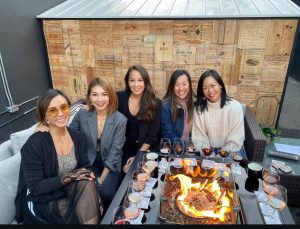
McGonigle, who has 30 years of experience in the restaurant and retail wine businesses, sees younger wine consumers caring “less and less every day” about wine scores. The exception is wine collectors.
“There are so many sources for scoring. Not all members of the two younger generations are familiar with all those online and print publications,” says McGonigle. “What they’re really looking for is wines they maybe haven’t seen before, shown in new ways, at prices that are not excessive. Wine bars with younger customers also want that.”
Stevenson adds that in such venues, the artwork and music tends to be meticulously curated.
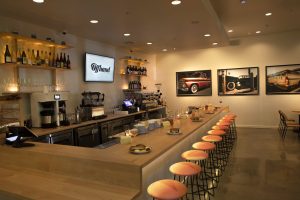
“You see interest partly because of the decor, the ethnic and racial diversity of customers, what people share online and the playlists. At Offhand Wine Bar we pair our playlists with the wine on our menu. Everything we offer says, “This is a place for you to unwind and have a good time,” says Stevenson.
Meeting young consumers where they’re at
Events directed toward younger wine consumers are another avenue to share the North Bay’s products. Millennials and members of Gen Z are starting to see wine as a tastier, more natural alternative to the dizzying array of India Pale Ales, sour beers and overly sweet canned cocktails.
One popular event is Big West Wine Fest (BWWF), a two-day June gathering of close to 100 natural producers. The event is held under the redwoods at Guerneville’s Solar Punk Farms. This October will also mark the second Cider Circus! , a one-day cider, beer and co-fermenting festival in October, held at Steamer Landing in Petaluma. The first Cider Circus! took place this past April. The events, organized by Emily Weber and Nina Kravetz, create a “big tent” that welcomes families and people from all generations.
“The idea of Big West Wine Fest and Cider Circus! is to celebrate the industry without leaving anyone out. For both events, we lean heavily on the producers and the people involved to spread the word. Many returning guests from the Big West Wine Fest use Instagram Stories to share photos and videos from their experiences,” says Kravetz.
Close to 800 attendees came to the BWWF in 2025. Weber and Kravetz expect that number in 2026, and about 400 Cider Circus! Guests.
“We did a survey for BWWF in 2023 and found the demographics of attendees to be 30 to 40% from Sonoma County, 30% from the San Francisco Bay Area, and 20% from elsewhere, including Los Angeles and Chicago,” says Weber.
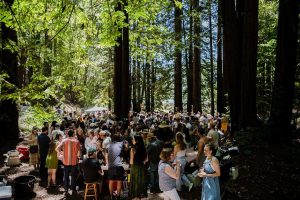
Wine producers at the BWWF from the past three years have included Pax Wines from Sebastopol, Filomena Wine Company in Sonoma and Ryme Cellars in Forestville. The BWWF retains an offbeat and colorful tone by inviting numerous local restaurants and food trucks, as well as a variety of vendors, including Russian River’s Books & Letters and Hair & Heavy Metal, a Guerneville-based mobile hair salon.
“In 2026, we plan to broaden our reach of winemakers and invite more natural wine producers from beyond the North Bay. We’ll also have an epic experimental test kitchen and a livestream radio program about the event going all weekend,” says Kravetz.
Weber says the idea for the events occurred to her and Kravetz when they were working for producers in Sonoma County.
“We asked ourselves why we were driving an hour south to showcase Sonoma County wines instead of bringing folks up here,” says Weber.
A bit farther east, at the Obsidian Wine Co. facility in Sonoma, winemaker Justin Michelle Ward Trabue agrees that events set the tone for wine consumption.
“Wine is a luxury product, but it’s also a fun product that’s meant to be shared with people. Wineries, retailers, restaurants and distributors should look for experiences that interest millennials and members of Gen Z. They should tie wines to those,” says Ward Trabue.
Ward Trabue makes a variety of natural vintages for her label, Ward Four Wines. She sources grapes from vineyards in Healdsburg, Contra Costa County, Amador County and Mendocino County.
“On my website and at events, I pair the wines with movies, TV, music and art. For example, my petite sirah grown in Healdsburg at Grist Vineyard is big, bold and juicy. I pair it with music ranging from jazz to classic rock,” says Ward Trabue.
Ward Trabue often shares her wines with younger consumers by bringing her bottles and presence to events that welcome beginners. This year, one example was WINeFare , a celebration of the achievements of women who make natural wines [The WINe is for women in natural wine]. In June, WINeFare took place at the Haight Street Art Center in San Francisco. A number of North Bay producers were present, including Delphinium Wine Co. from Healdsburg, Cary Q Wines and Birdhorse Wines, both from Santa Rosa, and Matthiasson Wines from Napa.
“North Bay producers can and are making wine tasting and buying much more accessible,” says Ward Trabue. “I think it’s a good idea to link wine with nostalgia, such as cool movies like Party Girl with Parker Posey. Once I shared wines at a Dungeons & Dragons session that we played over the internet on Discord, a chat app. We recorded it for a podcast that you could download.”
She added that she regularly sees a diverse audience enjoys Swirl School hosted by New York-based wine educator Amari Collins to learn more about wine. This particular recurring event occurs at Rampant Wine Co. in San Francisco.
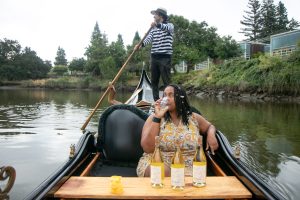
“At these events, producers and wine influencers talk to a fully packed house of folks from across the Bay Area. They explain grapes like Muscat and Viognier that are less discussed and interesting to young consumers. They make sure no one’s ignored and everyone’s treated well,” says Ward Trabue.
Ward Trabue also shares that millennials and members of Gen Z are looking for opportunities to receive smaller shipments of wine at a lower cost.
“Younger consumers may be interested in two 6-bottle shipments a year rather than quarterly 6 to 12-bottle boxes. Meet them where they’re at. If you want them to come visit, ask what music they’d like to hear and what they want to do at the pick-up party,” says Ward Trabue.
